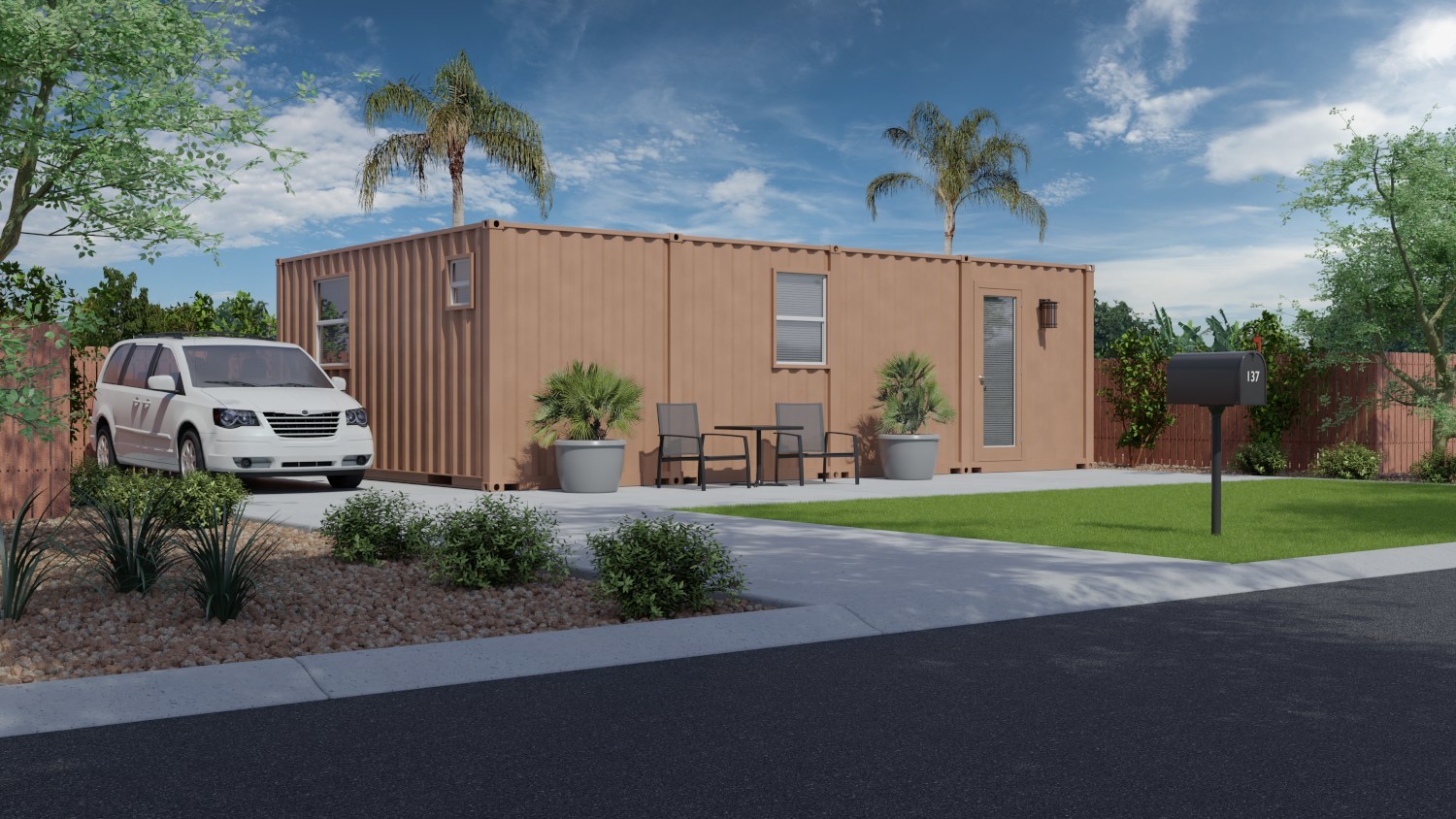Due to easing of restrictions around backyard homes (aka ADUs) Phoenix-based Linked Equipment has created a small, medium, and large affordable home solution: container homes that start at $45,000.
Linked Equipment creates turnkey custom homes out of shipping containers. Working with design specialists each customer can create a custom living environment that fits their available space and budget. They can choose the paint color, the number of rooms, which rooms, and even the finishes.
The homeowner verifies locally what they are allowed to build on their property. Linked Equipment designs, builds, and delivers a custom home that conforms to their local regulations.
“Quality is our differentiator,” says Mark Pike, president of Linked Equipment. “We use better materials, and we do not skip steps when it comes to safety. I would like to think that our buildings are built the same, or better than, most of the commercial buildings we visit.”
Better for the Homeowner
Architectural, Civil and MEPS plans typically cost a decent chunk of your build budget, and many people do not know where to obtain these services. When you work with Linked Equipment, they have engineers that provide proper plans. This is what you will need to get your permits.
Linked Equipment takes on many of the challenges associated with a second unit. Its engineers worry about all mechanical, structural, electrical, safety and fire standards.
Linked Equipment builds to industrial standards, so its homes are solid and secure and feel like a home, not a prefabricated mobile home. When the homeowner is ready, Linked Equipment will build and ship it to their property and gently place it right on a pad.

Affordable Homes aka ADUs
Affordable homes go by many names. State agencies call them Accessory Dwelling Units (ADUs). They are commonly known as granny units, in-law suites, tiny houses, man caves, she sheds, second Units, affordable homes, modular living space, container houses or any number of other names.
Affordable homes vary in shape and size, containing everything someone needs to live, including a kitchen, bathroom, and place to sleep. They typically range from 220 square-foot studios to 1,000 square foot houses with multiple bedrooms. Most states have requirements around allowable sizes. Usually, the second living space is not allowed to be larger than your main home.
States Easing Restrictions
Many municipalities in the U.S. have adopted the concept to allow ancillary apartments, often called “granny flats,” in single-family districts. States are not only easing regulations, lowering fees, and grandfathering existing structures to provide housing, but are even offering grants and loans to homeowners to help them do it.




